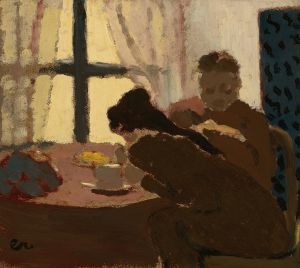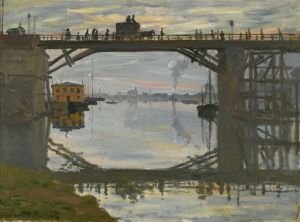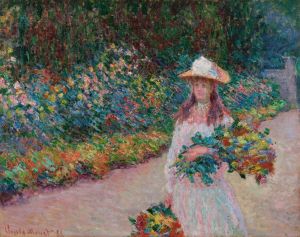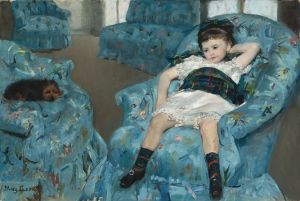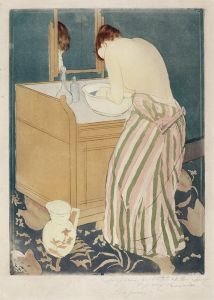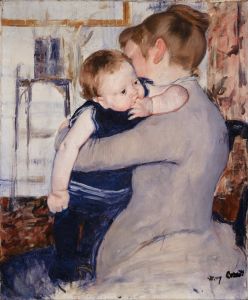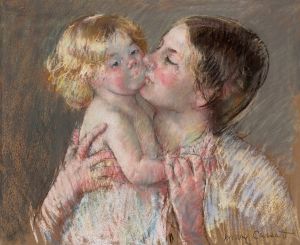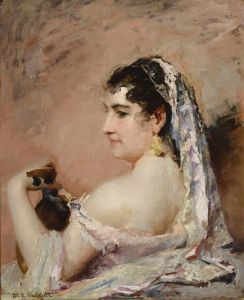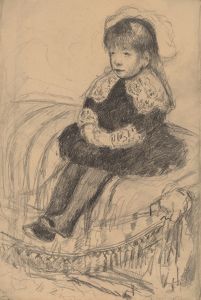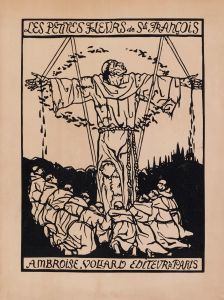
The lamp
A hand-painted replica of Mary Cassatt’s masterpiece The lamp, meticulously crafted by professional artists to capture the true essence of the original. Each piece is created with museum-quality canvas and rare mineral pigments, carefully painted by experienced artists with delicate brushstrokes and rich, layered colors to perfectly recreate the texture of the original artwork. Unlike machine-printed reproductions, this hand-painted version brings the painting to life, infused with the artist’s emotions and skill in every stroke. Whether for personal collection or home decoration, it instantly elevates the artistic atmosphere of any space.
Mary Cassatt, an American painter and printmaker, is renowned for her contributions to the Impressionist movement and her focus on the intimate lives of women and children. One of her notable works, "The Lamp," exemplifies her unique style and thematic interests. Although specific details about "The Lamp" are not as widely documented as some of her other works, we can discuss Cassatt's broader artistic context and her approach to similar subjects.
Mary Cassatt was born on May 22, 1844, in Allegheny City, Pennsylvania, and spent much of her adult life in France, where she became associated with the Impressionists. Her work often depicted the private and social lives of women, with a particular emphasis on the bond between mothers and children. Cassatt's style was characterized by a delicate yet bold use of color and a keen eye for capturing the subtleties of human expression and interaction.
"The Lamp" likely fits within Cassatt's exploration of domestic interiors and the everyday lives of women. Her paintings often feature women engaged in activities such as reading, sewing, or caring for children, set against the backdrop of a home environment. Cassatt's use of light and shadow, as well as her attention to detail, would have been instrumental in conveying the warmth and intimacy of such scenes.
Cassatt was influenced by both the Impressionists and the Old Masters, and her work often reflects a synthesis of these influences. She was particularly inspired by the works of Edgar Degas, with whom she shared a mutual respect and friendship. Degas introduced her to the Impressionist circle, and she exhibited with them in several of their shows. Cassatt's work, like that of her Impressionist peers, often focused on capturing the effects of light and atmosphere, though she maintained a distinct approach that emphasized form and structure.
In addition to her paintings, Cassatt was an accomplished printmaker, and her prints often explored similar themes to her paintings. Her printmaking was influenced by Japanese woodblock prints, which were popular in Europe during the late 19th century. This influence is evident in her use of flat, bold colors and strong lines, which can also be seen in her painted works.
While specific information about "The Lamp" is limited, it can be appreciated within the context of Cassatt's broader oeuvre. Her work remains significant for its portrayal of women's lives and its contribution to the Impressionist movement. Cassatt's paintings continue to be celebrated for their technical skill and their empathetic portrayal of her subjects, offering a window into the private worlds of women in the late 19th and early 20th centuries.
Mary Cassatt passed away on June 14, 1926, in Château de Beaufresne, near Paris, leaving behind a legacy as one of the foremost female artists of her time. Her work continues to be studied and admired for its artistic merit and its insightful exploration of the roles and experiences of women.







